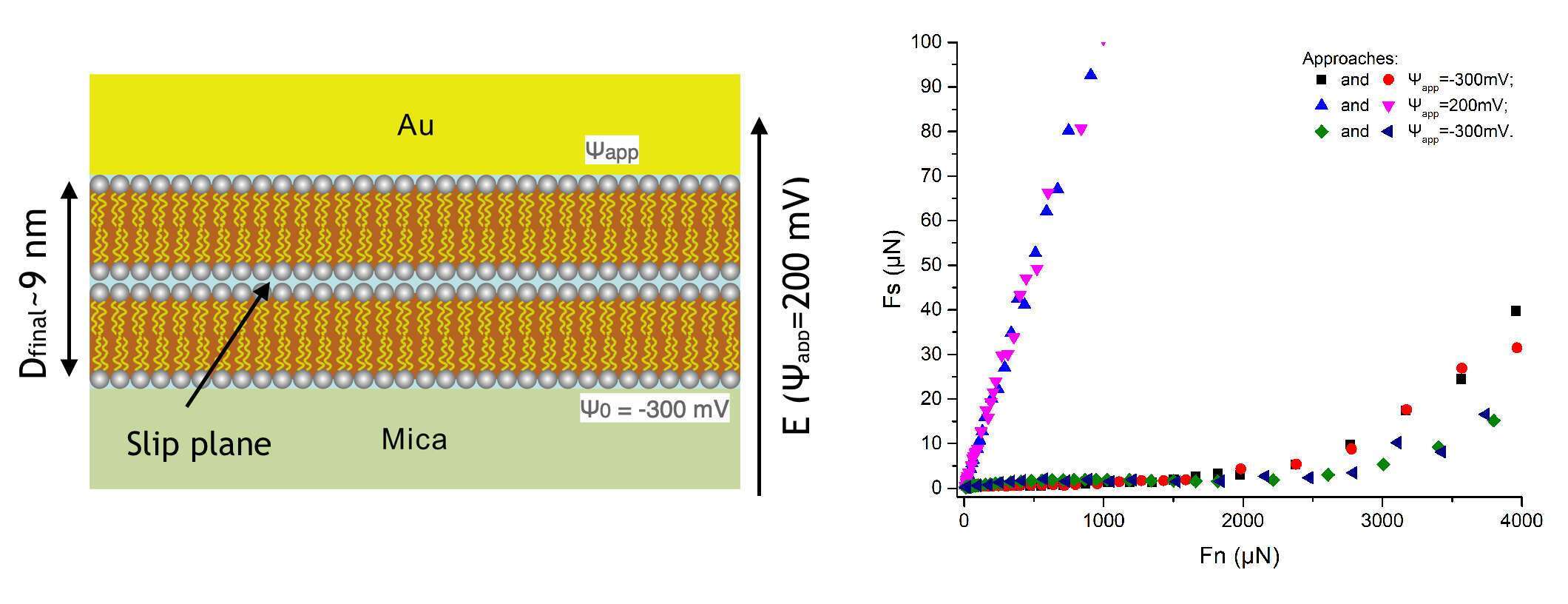
Friction control between phosphatidylcholine lipid bearing surfaces via electric field-induced conformational change
Frictional energy dissipation occurs when two contacting surfaces are set in relative motion. Such dissipation, if unpreventable, could pose a wide range of problems from industrial applications to human health issues. Here we focus on friction control by electric stimuli for the ease of application and its reversibility. In aqueous systems, stimuli response of ionic liquids and polyelectrolyte brushes have been demonstrated. However, friction control in the “hydration lubrication” regime has received less attention. In this work, we have demonstrated with the surface force balance technique that by using the external electric field, the frictional forces between two POPC bilayer covered surfaces could be tuned by 2-3 orders of magnitude, and the change of friction is fully reversible as the friction coefficient changed between a low level of μ=~10-3 - 10-4 between negatively charged gold and mica surfaces, to a much enhanced level of μ=~0.1 when the gold surface is positively charged. This is by far the largest relative potential-induced change of frictional dissipation to our knowledge.
Such behavior can be attributed to the conformational change of lipid molecules on the exposed surface: changing tilt angles of the exposed hydrophilic phosphocholine groups, and interference of the hydration shell due to water dipole alignment to the external electric field. An existing molecular dynamics study of POPC membrane has demonstrated that the average P-N angle increases on the anodic side and decreases on cathodic layer, and the water molecules which form the hydration shell by being anti-parallel to the dipoles of the lipid heads are counter-reoriented by the electric field on the cathodic side. It is expected that the reduced hydration shell and the induced asymmetry of surface charges of the bilayer will enhance the inter-bilayer interactions. The validity of this hypothesis will be investigated by a MD simulation of a POPC bilayer using the CHARMM all-atom force field.

Powered by Eventact EMS